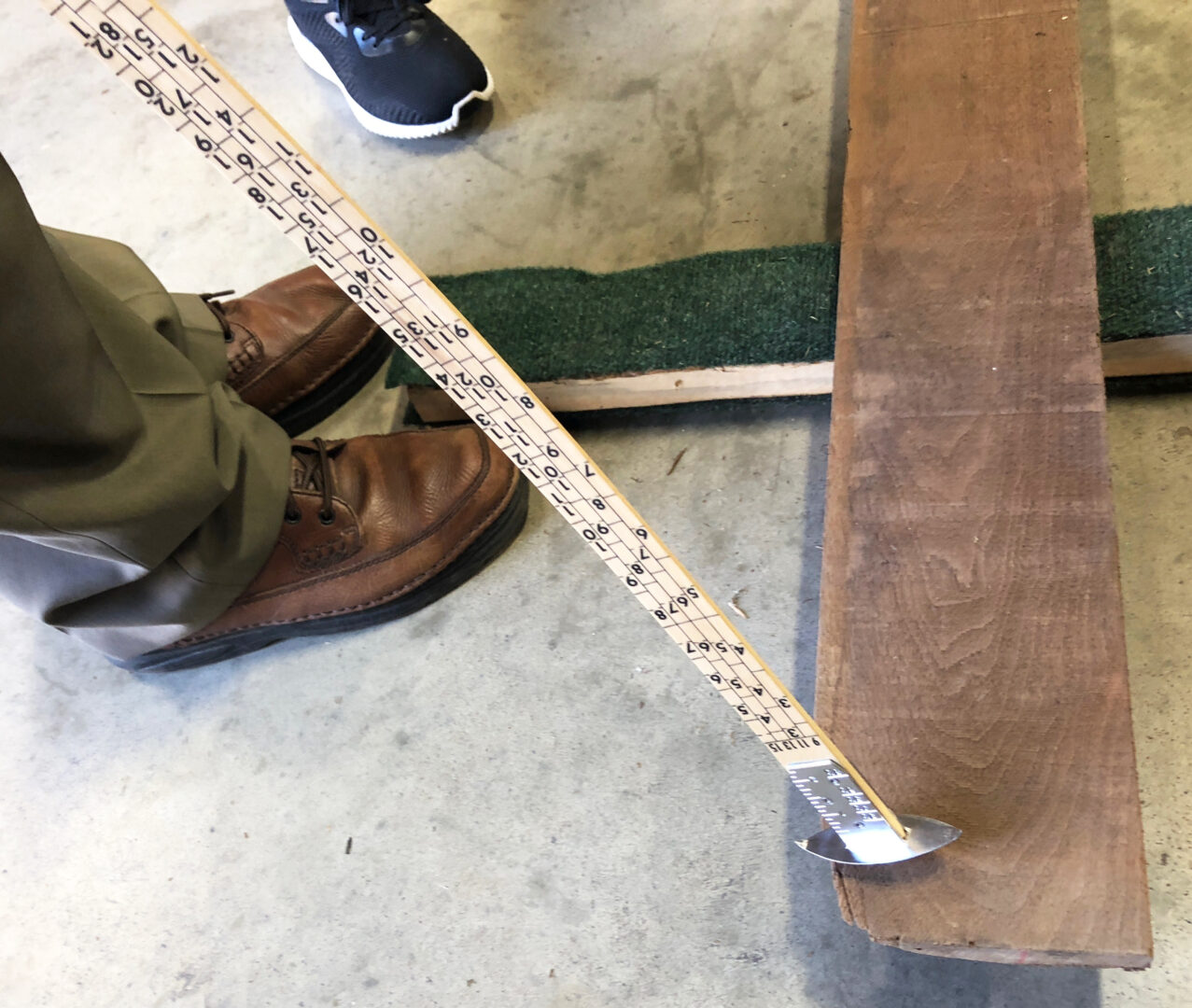Improve Your Accuracy – Empower Your Lumber Inspector
Knowledge is Power.
Hardwood Lumber Inspectors have a significant responsibility in grading hardwood lumber. They must not only determine the grade but also ensure that all limitations are not exceeded. This month I would like to point out some areas that can improve the lumber inspector’s accuracy and the mill’s overall grade yield.

The first area involves the Miscut Lumber Rule. The current Rule is on page 5, paragraph 9 of the 2019 Rules Book:
“Rough lumber shall be categorized for Standard Thickness by the measurement taken at the thinnest cutting used in establishing the grade. If there is a greater variation in thickness over the entire length of the piece than shown in the following table, the board shall be classed miscut.”
3/8″, 1/2″, 5/8″, and 3/4″ minus 0″ / plus 3/16″
4/4 and 5/4 minus 0″ / plus 1/4″
6/4 and 7/4 minus 0″ / plus 3/8″
8/4, 10/4 and 12/4 minus 0″ / plus 1/2″
14/4 to 24/4 minus 0″ / plus 5/8″
As stated in the Rule above, there is no allowance for any Standard Thickness of lumber to be under thickness anywhere on the piece; this includes overlength. This is a challenge for lumber inspectors grading from one end of the board, as has been the trend over the years with many lumber producers. After the lumber is kiln-dried, there is an allowance for under thickness from 3/8 to 7/4. It can be 1/16″ scant, 8/4 and up can be 1/8″ scant in thickness.
My suggestion is for the Lumber Inspector to work with anyone downstream that comes into contact with the boards. Empower them to understand that the boards are under thickness. Once thickness issues are identified, the Inspector should inform someone who has the authority to fix the problem. The Inspector should also identify which areas of the boards are out of tolerance to aid in the identification of the machine that is causing the issue.
Inspectors should also work with the edger and trimmer operators to teach them the Wane and First Lineal Foot rules. If the lumber is properly manufactured before it gets to the grading area, the job is much easier for the Lumber Inspector, and you will save yourself a great deal of time and headache – which makes you more efficient and profitable.
For anyone wanting NHLA to work with their team, please get in touch with NHLA or the National Inspector in your area. Dana can be reached at [email protected] or by phone at 901-399-7551.
Share:
Related News & Blog

June 1, 2025

June 1, 2025
Questions?
Have questions or need any assistance regarding the NHLA Annual Convention & Exhibit Showcase?
